DIY Shiplap Kitchen Island
We added some personality to our kitchen island and it looks so (SO!) much better! Get all the details on how to get your own shiplap kitchen island right here!
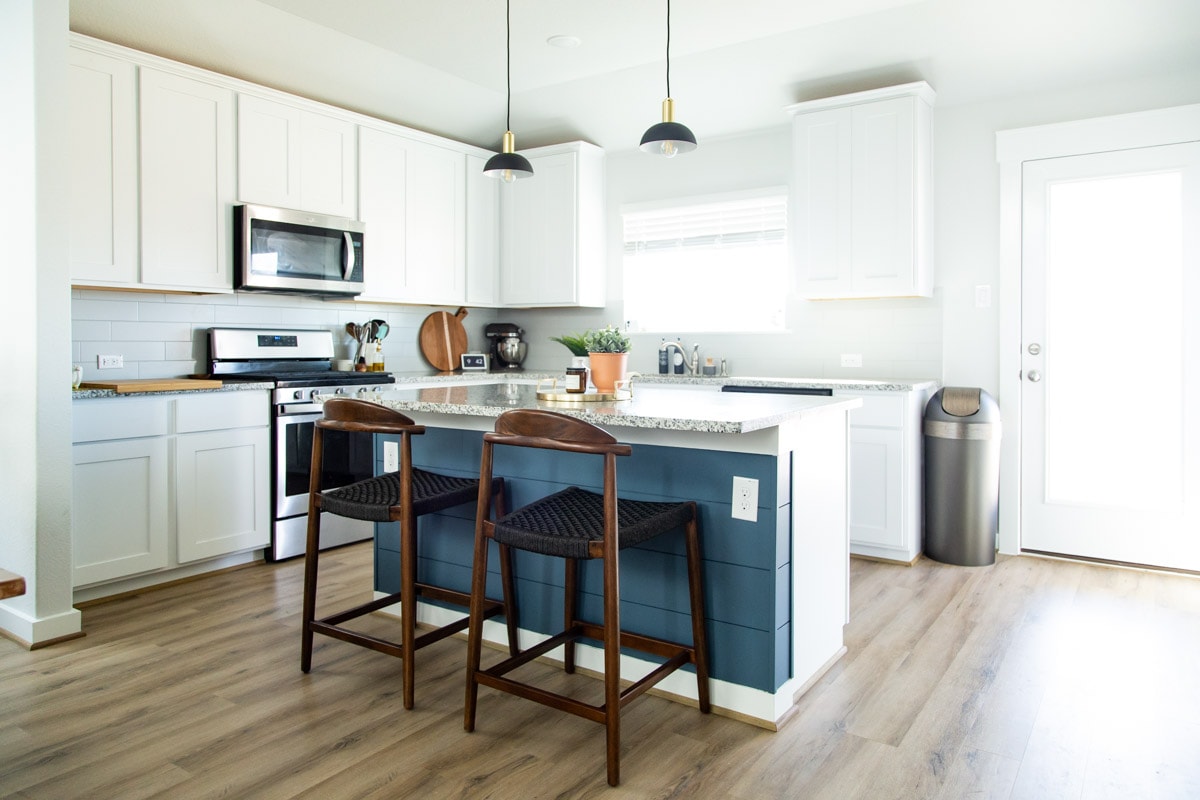
Yall.
YALL!
The first official interior project in our new house is complete and Im SO EXCITED to be sharing it with you today!
It kind of feels weird that weve been living in this house for about 6 weeks and are just now getting around to doing things like this in both of our previous houses we dove in right away! But, Corey and I are both absolutely determined to take things slow and steady in this house and really think through every project before we do anything.
Of course, to some people Im sure waiting 6 weeks is diving right in, haha!
We knew from the moment we decided to purchase this house that we would want to do something to the drywall on the back of the island. The kitchen is all white and, while its totally gorgeous, its not really our style. I wanted something that would ground the space a little and make it feel more like us.
Plus, nobody wants a white wall in the exact spot that childrens feet (and sticky fingers) are constantly touching. It looked dirty after just a few days of living here!
I had been saving some leftover shiplap from our shiplap fireplace makeover that we did over a year and a half ago we didnt have much left but I kept insisting on saving it and even moving with it because I knew wed find some use for it eventually.
And goodness, Im so glad we saved it!
Heres the rundown of how I tackled this project it didnt take long to get done (if youre focused and dont have kids running around, you could probably get it done in a day with distractions you could easily do it in a weekend). And, the finished result honestly feels like it always should have been here.
Easy DIY shiplap kitchen island
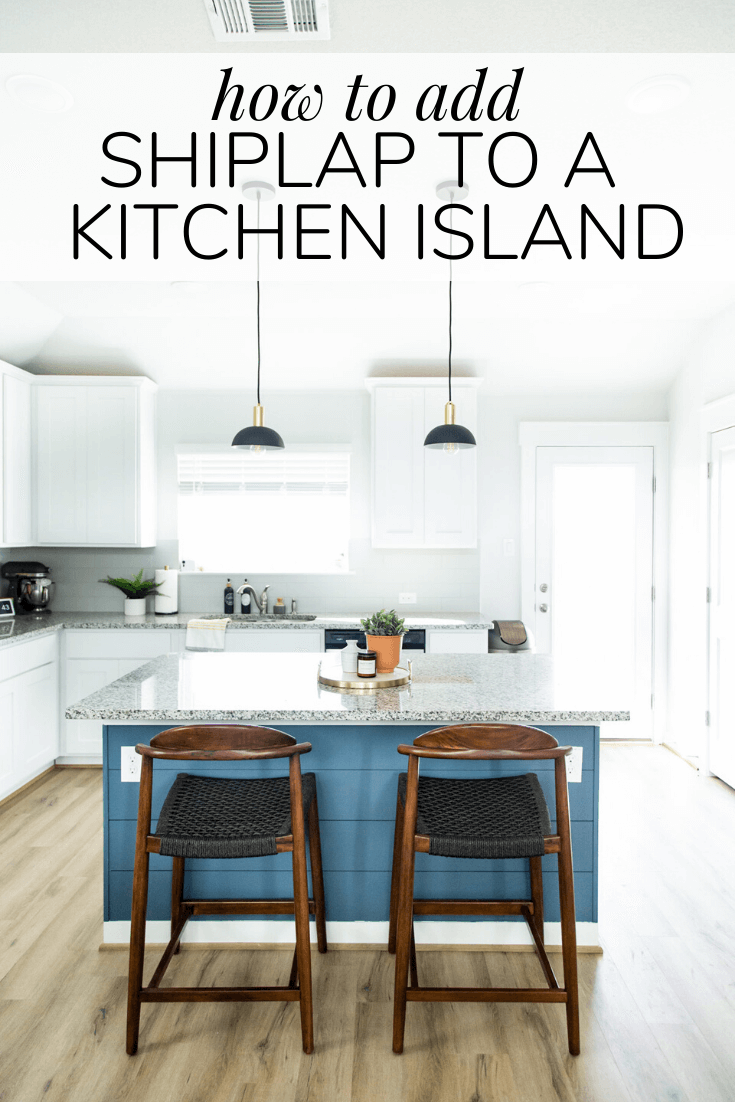
Time needed:1 day.
MATERIALS NEEDED:
Shiplap (I used this brand its really high quality!)
3/4 corner trim
Painters tape
Wood putty
180-grit sandpaper
Caulk
Paint (I used NYPD by Behr)
Paintbrush
Foam Roller
TOOLS NEEDED:
Nail gun (with 1 1/2 nails)
Miter saw
(Optional) Pin nailer
-
Determine your board lengths
The first thing youll need to know is how you want to lay the boards if you have enough material to do full-length pieces all the way up, thats great! However, it wastes a lot of material (I could only get one length out of an 8 board, so the rest would be mostly unusable) and I didnt have much to begin with, so I chose to have some seams in my shiplap.
You can plan out specific spots for the seams to be, or you can do what I did and just kind of randomly stagger them. I started with a board that went approximately 3/4 of the way down the island, then simply measured and filled in the rest of the row with a second board.
Theres no right or wrong answer here just decided if youll have seams or not, then youre ready to go from there. -
Measure and cut your first board
Start by measuring the length of your island at the bottom where youll be installing your first board. Walls arent always even or straight, so youll want to measure for each board individually.
Once youve measured, youre ready to cut your first piece (based on the lengths you determined in step one). The outside edge of the board (where the board meets the corner) will need to be cut at a 45-degree mitered angle. Click here to see my full tutorial for how to use a miter saw (including how to make mitered cuts) . Just remember that youre measuring the BACK of the board thats the part that touches the wall and where you should be measuring and marking from! -
Install your first board
After youve cut the first board, its time to install it. Simply lay it on top of your baseboard and line the mitered edge up with the edge of the island. Check to be sure its level before you nail it in place (I just used the level app on my phone I find that its generally really accurate!) if your floors are level, you should be fine.
Grab your nail gun and nail the board into place. I like to put a nail every 8-12 inches along the top ridge of the board (where the next board will sit) so that most of the nails are hidden. Then, I add a second nail every 12-18 inches along the bottom to prevent the board from tilting at all. -
Finish the first row
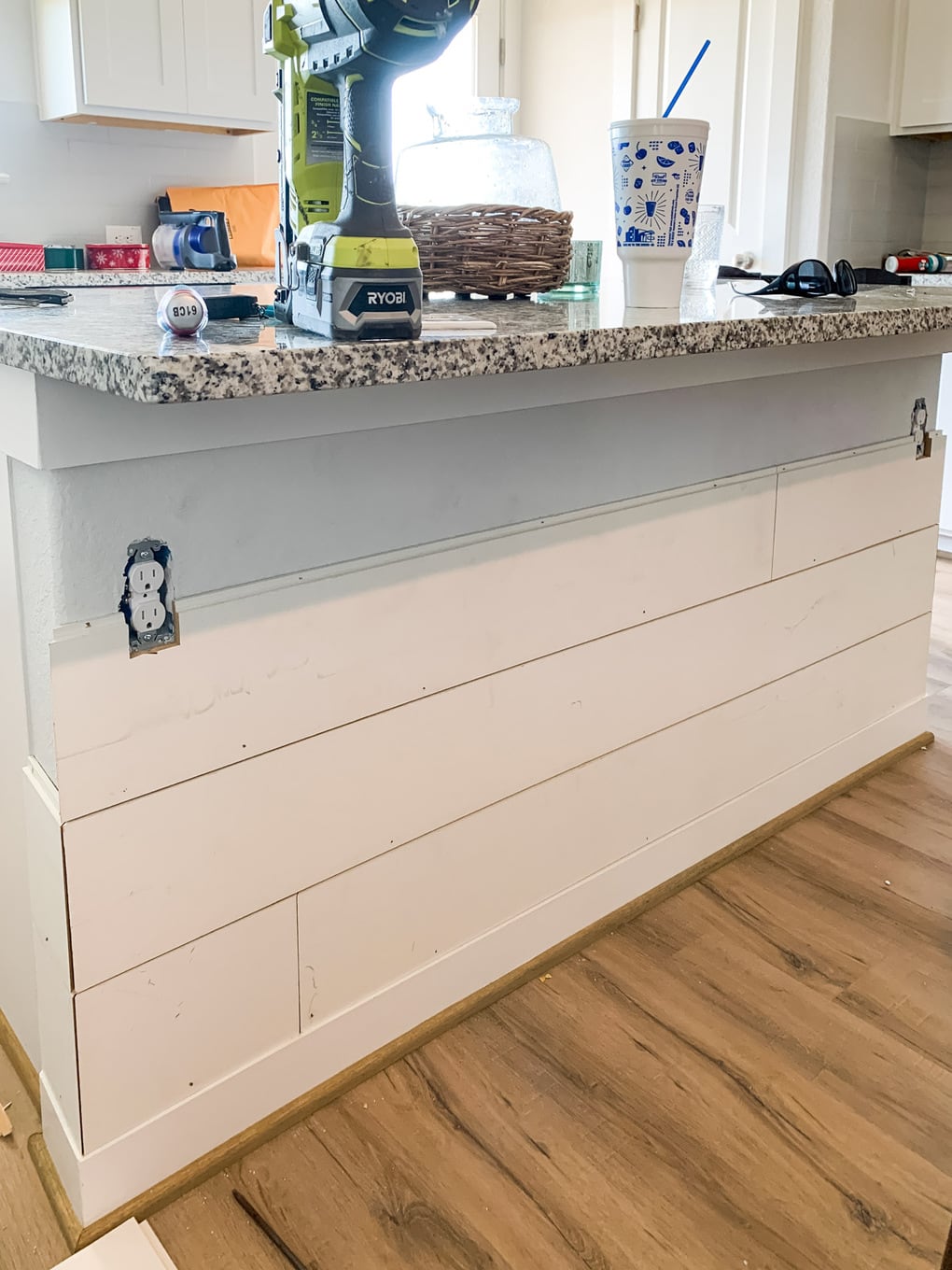
Now, you can measure the remaining space from your first installed board to the other end of the island, and go cut that piece and install it using the same process. Remember to miter the outside edge and measure on the back of the board!
-
Shiplap the sides
Once the front row is up, you can wrap the shiplap around the sides. My sides were only about 5, so I only needed one piece per row.
Youll miter the edge to line up with the front (remember the back should have LESS wood showing and the front should have MORE in order for the mitered edges to line up), and install it using the same method.
Dont stress if the corners dont line up perfectly. Thats what trim is for! -
Repeat until you reach the top
Rinse and repeat steps 1-5 until you reach the top row!
You may end up needing to use a table saw to rip the top row down a bit if the rows dont fit perfectly (we did). -
Add corner trim
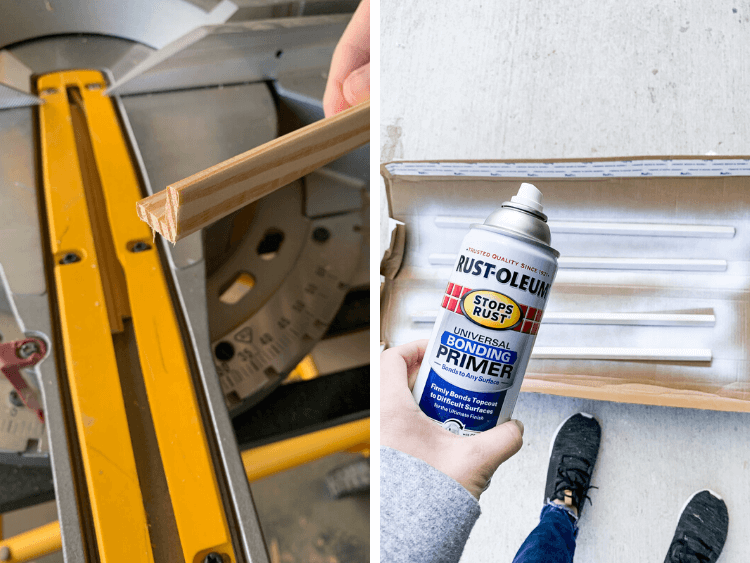
This step is optional, but my mitered corners rarely line up perfectly (thanks to uneven walls and human error), so I find that adding some corner trim makes everything look professional and finished and allows me to not stress about making things perfect.
I got this 3/4 pine corner trim from the hardware store. They had some larger corner trim that was pre-primed, but I wanted to get it as small as possible so I just primed it myself using my favorite spray primer.
Once it was primed, I simply measured the height of wall where I wanted to install it, then used my pin nailer to install the trim. You could use a regular nail gun as well, but a pin nailer allows you to avoid needing to patch any nail holes!
I installed mine on both the front corners and on the corners where the shiplap meets the cabinet because the spacing was perfect. If your island is set up differently than mine, you may only need it on the front! -
Patch and caulk all of the seams and holes
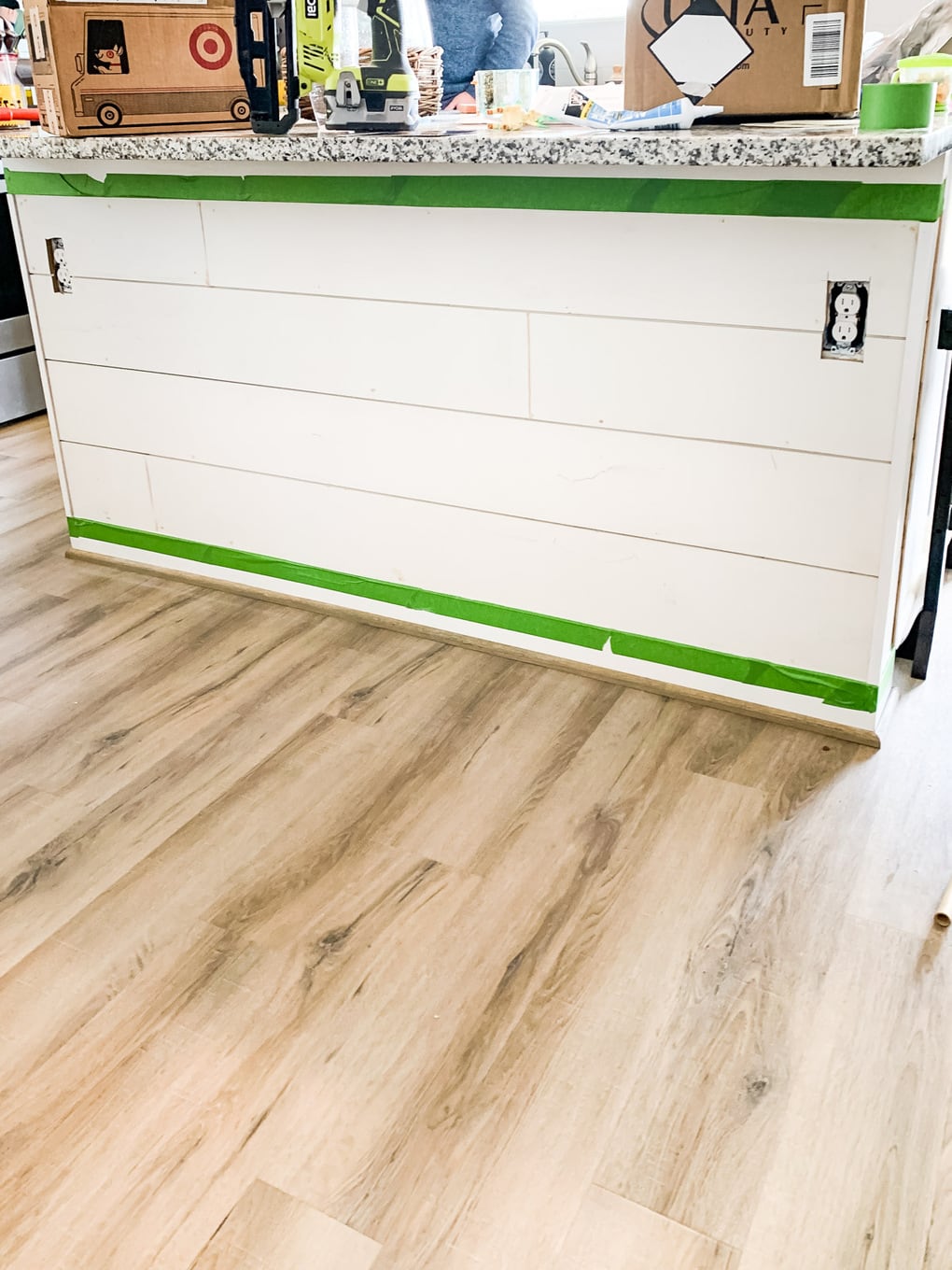
Youre almost ready to paint just one last step!
Your final step before painting is to patch all of the nail holes and caulk the seams. I used the wood putty linked above to patch all of the nail holes in the shiplap, as well as the seams. Be sure to over-fill the nail holes youll sand it down once it dries, so you can be generous!
Every wood putty will have different directions and dry times, but as a rule you just use a putty knife (or a plastic knife if youre like me and cant find yours) to press it into the hole, allow it to dry for about 30 minutes, then sand until smooth.
Same thing for the seams press the putty in the seam (overfill just a little!), let it dry, then sand!
Youll use caulk on the edges where the shiplap meets your island or baseboard. I like to use this stuff that doesnt need a separate caulk gun for small projects like this. Run a bead of caulk along the edge, then use your finger to smooth it out. It can help to use painters tape to keep it from getting anywhere you dont want it! Check the directions on your caulk to see how long it needs to dry before painting 30 minutes to an hour is typical. -
Paint!
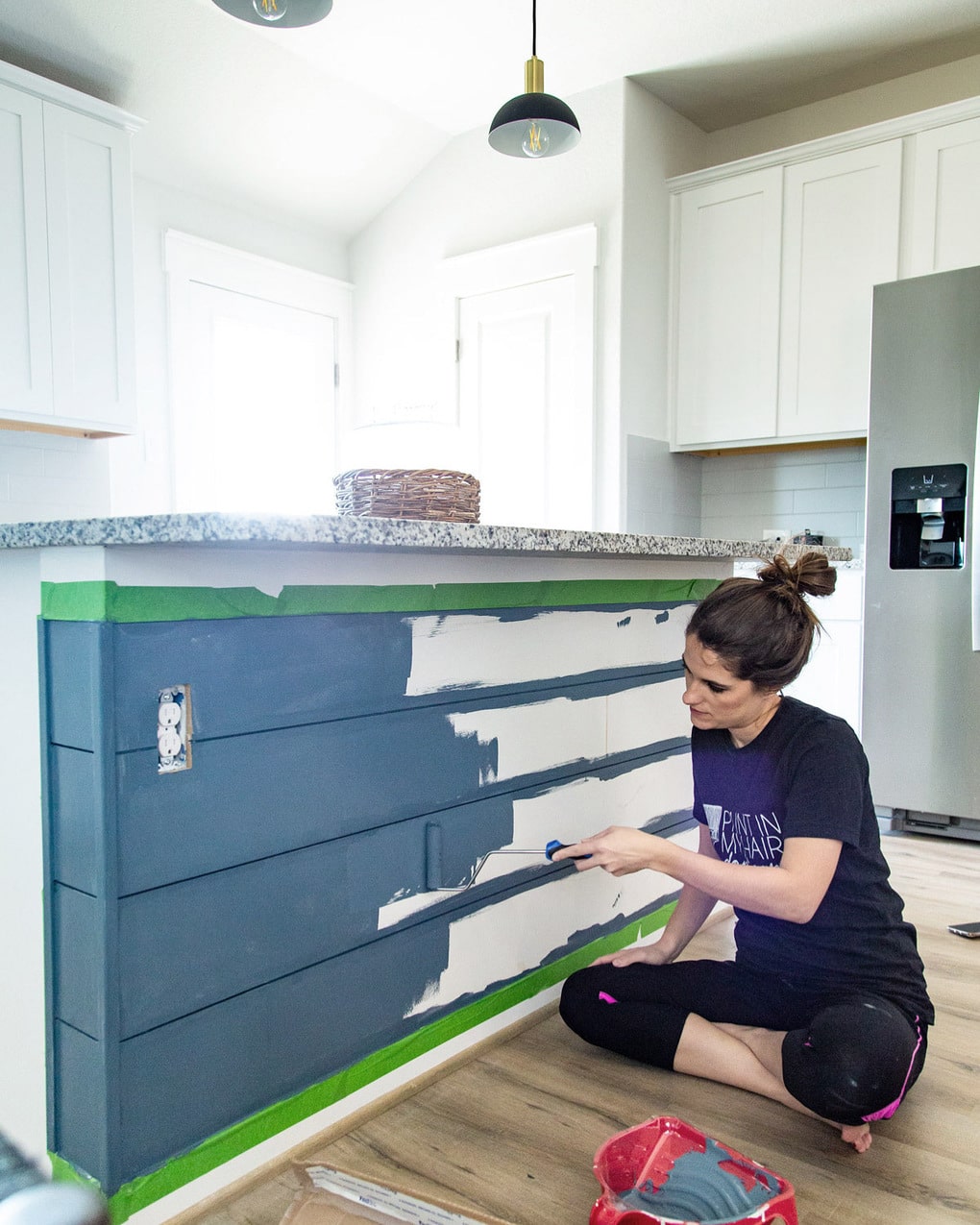
Now comes the fun part time to paint!
Tape of all of the baseboards and trim that you arent painting with painters tape, then use your foam roller to paint the shiplap. I like to use a regular angled paintbrush to get into the gap between the shiplap. I used NYPD by Behr for our island it took two coats to fully cover the shiplap, and we were good to go!
-
A NOTE ON OUTLETS:
If you have outlets on the back of your island like we do, youll have a couple of extra steps to take.
When you get to the row that will need a hole cut for the outlet, measure exactly where it needs to be, mark it on the back of your board, and use a jigsaw to cut a hole for the outlet. It only needs to be as big as the opening in the drywall any bigger and the outlet cover may not cover it up!
Install the shiplap as usual. When youre done, you can use these outlet spacers to push the outlet out to be level with the shiplap, then re-install the cover!
And thats it! When youre done, youll have an island that looks a little something like this.
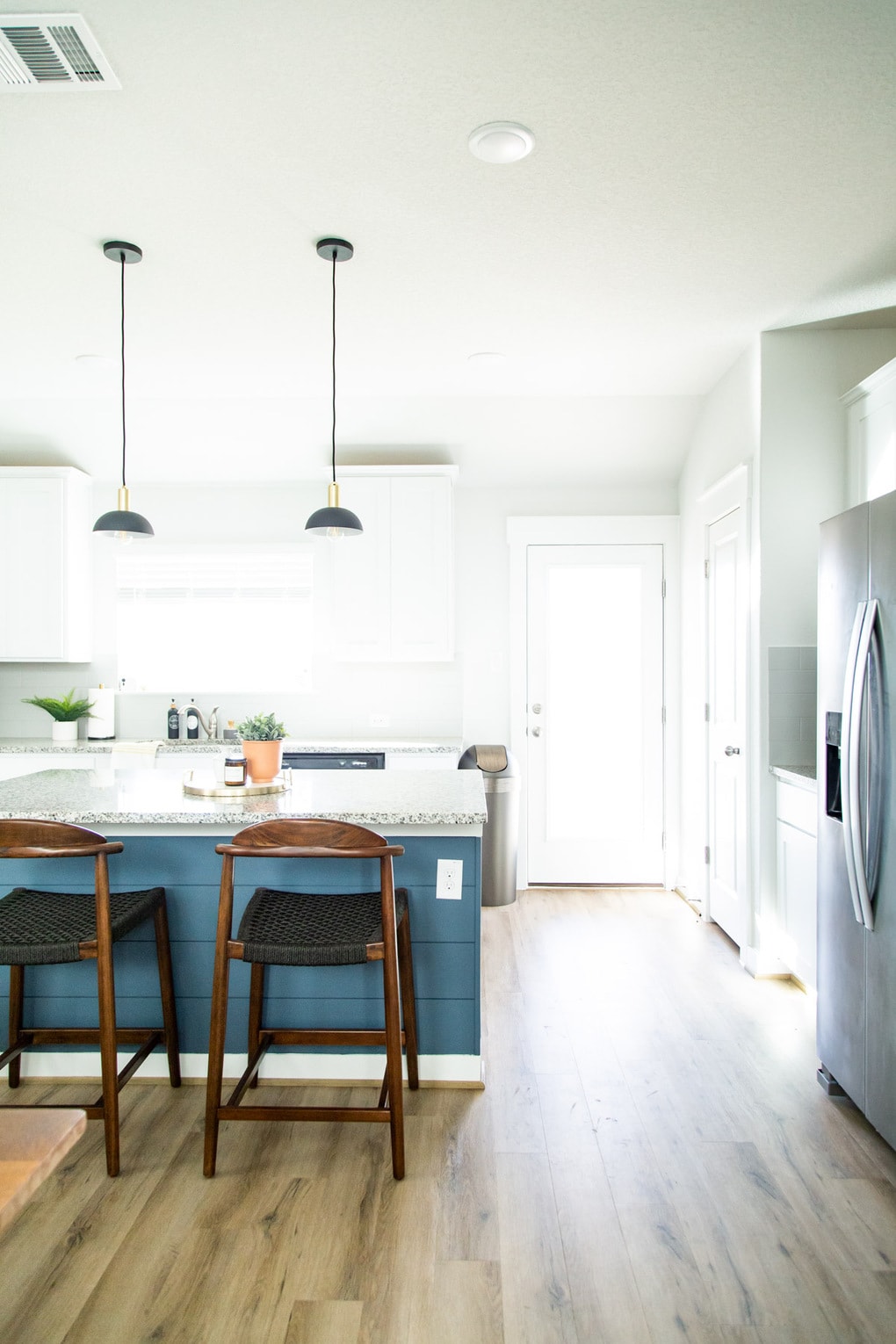
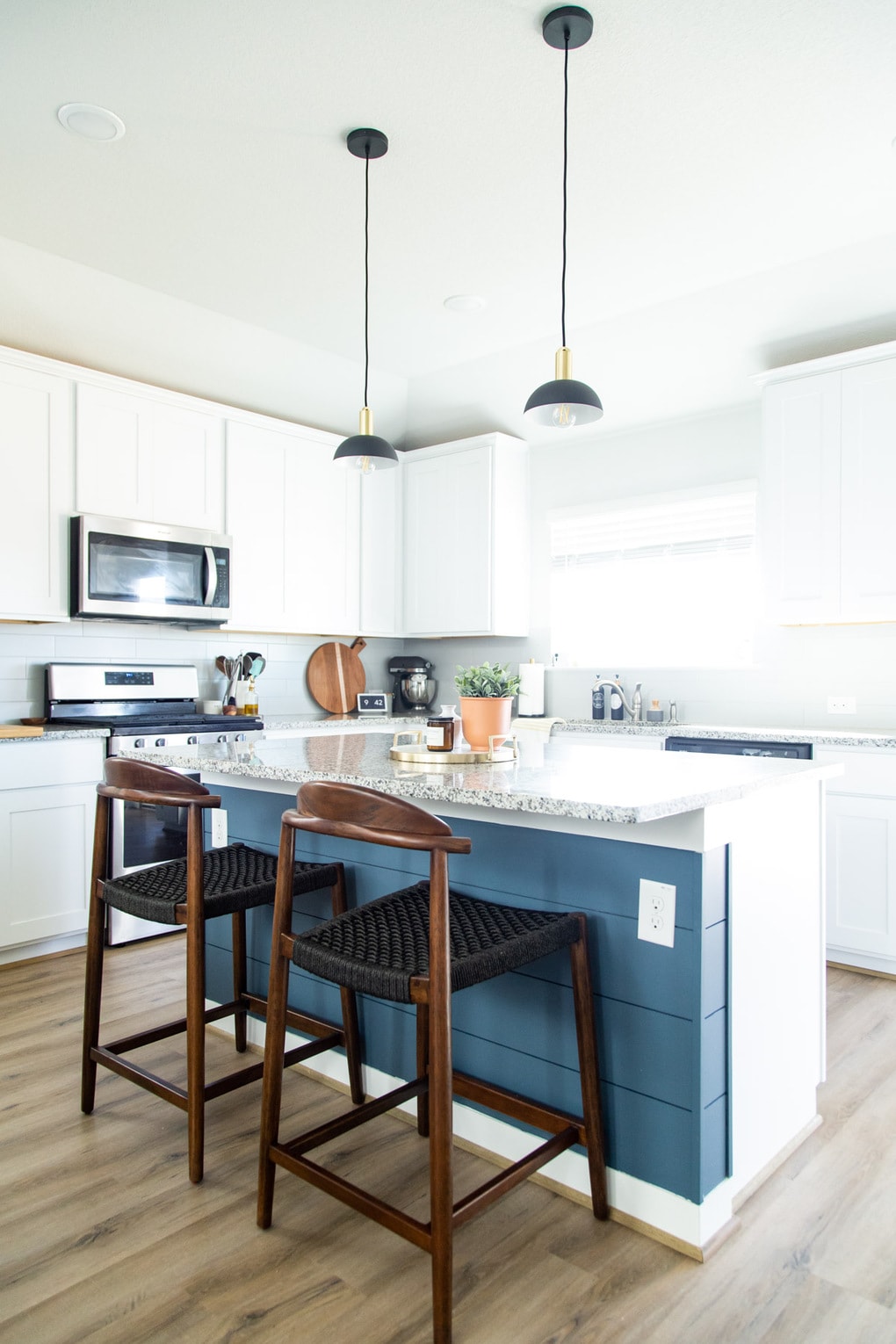
I am so in love with how this turned out I feel like it really makes the entire space feel more grounded and complete. I still have some projects I want to eventually do in my kitchen (like add hardware, swap the microwave for a vent hood, add something above the kitchen window, and several other things), but this little change makes me a lot happier with it in the meantime!
The post DIY Shiplap Kitchen Island appeared first on Love & Renovations.
